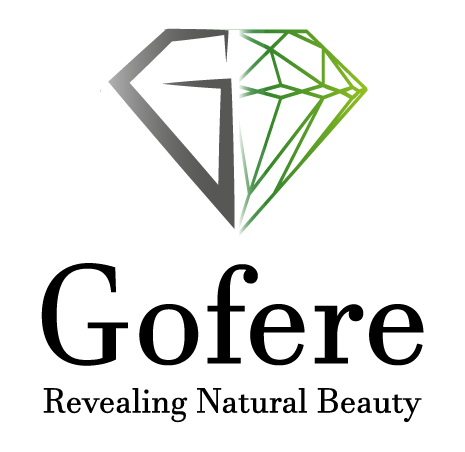
Emerald education
How to Spot a Well-Cut Emerald
Not all emeralds are created equal — and neither is their cutting. A well-cut emerald brings out the best in the stone, enhancing its natural color, minimizing visible inclusions, and maximizing brilliance.
What to Look For:
-
Symmetry: The shape should be balanced. If it’s an emerald cut, all corners should be even and aligned.
-
Proportions: A well-proportioned emerald has a table (top facet) that’s neither too large nor too small, and the overall depth ensures the stone doesn’t look flat.
-
Polish: A high-quality polish gives the stone a smooth, glass-like finish that reflects light beautifully.
-
Faceting Angles: Expert cutters calculate precise angles to maximize brilliance and hide internal flaws.
-
Face-Up Appeal: A good emerald catches your eye from the front — the color is lively, and the stone looks vibrant even in natural light.
Remember: Cutting is a mix of science and art. A great cut can make a mid-grade stone look much better, and a poor cut can ruin even the most valuable rough.

_HEIC.png)
Understanding Emerald Treatments: Oils & Resins
Emeralds, like many natural gemstones, often contain surface-reaching inclusions or tiny fissures formed during their growth deep within the earth.
These natural characteristics give emeralds their unique charm — but they can also affect clarity. To enhance the beauty and transparency of emeralds, various treatments are used, most commonly the filling of fissures with oils or resins.
At our company, we believe in full transparency. Here’s what you need to know about the different types of treatments used in the emerald industry.
And in the end we will discover what we personally use.

Natural Oils
Cedarwood Oil (Traditional Treatment)
Cedarwood oil is the most traditional and widely accepted treatment for emeralds. It is colorless, non-permanent, and used to gently fill surface-reaching fissures, making them less visible and improving overall clarity.
• Pros: Natural, reversible, widely accepted by gemological labs.
• Cons: Not permanent — over time, oil can dry out or evaporate, especially if the stone is exposed to heat or harsh cleaning.
• Common in: High-quality, untreated or minimally treated emeralds.
Other Natural Oils
In some cases, other natural, non-colored oils may be used. While similar to cedarwood oil in purpose, they may vary slightly in stability or composition.
One for example is Natural Parffin oil (wax)

Synthetic Resins
1. Opticon (Epoxy Resin)
Opticon is a clear epoxy resin commonly used to fill fissures in emeralds. It provides longer-lasting clarity enhancement than oil.
• Pros: More durable than oil, enhances clarity effectively.
• Cons: Not considered “traditional,” and some labs may classify it as a higher level of treatment.
• Common in: Commercial-grade emeralds.
2. Silicone-Based Resins
Silicone resins are newer and gaining popularity due to their stability and optical properties. These resins are more durable than oil and often harder to detect.
• Pros: Permanent, highly stable, good optical matching.
• Cons: Considered a modern treatment; not always disclosed; some labs categorize it as moderate to significant treatment.
• Common in: Mid- to high-grade emeralds, depending on market.
At Gofere Gem LTD we use only Paraffin oil non color add that is common and acceptable at all jewelry brands all over the world.
Why This Matters
When purchasing an emerald, it’s important to know what type of treatment — if any — has been applied. Treatments affect not just the appearance of the stone, but also its value, care requirements, and resale potential.
We guarantee that every emerald we offer comes with full disclosure of any treatments, and we only work with trusted gemological labs to certify our stones.


Natural vs. Synthetic Emeralds
Natural Emeralds:
-
Formed in the earth over millions of years
-
Each one is unique, with its own inclusion patterns and color tones
-
Typically more valuable due to their rarity
-
Have historical and emotional significance
Synthetic Emeralds:
-
Created in a lab using the hydrothermal or flux method
-
Chemically similar but grown much faster
-
Generally flawless or nearly flawless, which can appear unnatural
-
Cost a fraction of natural emeralds
-
Often used in fashion jewelry

The History of Emeralds in Royalty and Jewelry
Emeralds have fascinated civilizations for over 4,000 years. From ancient temples to modern tiaras, these stones have always symbolized wealth, power, and prestige.
Notable Moments in Emerald History:
-
Ancient Egypt: Cleopatra was famously obsessed with emeralds, using them in her jewelry and palace decorations.
-
Inca & Aztec Civilizations: South American cultures considered emeralds sacred, using them in rituals and offerings.
-
Mughal India: Rulers wore carved emeralds inscribed with sacred texts, believing the stone brought protection.
-
European Royalty: Queen Victoria, Princess Diana, and other royals wore emeralds in their most iconic jewelry pieces.
-
Modern Luxury: Emeralds continue to grace red carpets and high jewelry collections from brands like Cartier, Van Cleef & Arpels, and Harry Winston.
Emeralds aren’t just beautiful — they carry centuries of history and status.

Caring for Your Emerald
Emeralds are precious, but they also require care. Unlike diamonds, emeralds often have natural inclusions and internal stress, making them more delicate.
Tips for Keeping Your Emerald Beautiful:
-
Avoid Harsh Cleaners: Never use ultrasonic or steam cleaners. Instead, use warm soapy water and a soft brush.
-
Remove During Rough Activities: Take off emerald jewelry when doing sports, heavy work, or cleaning.
-
Avoid Sudden Temperature Changes: Emeralds can crack if exposed to extreme heat or cold quickly.
-
Store Separately: Keep emeralds in a soft pouch or fabric-lined box to avoid scratches from harder stones.
With proper care, a natural emerald can last for generations — becoming a treasured heirloom.
